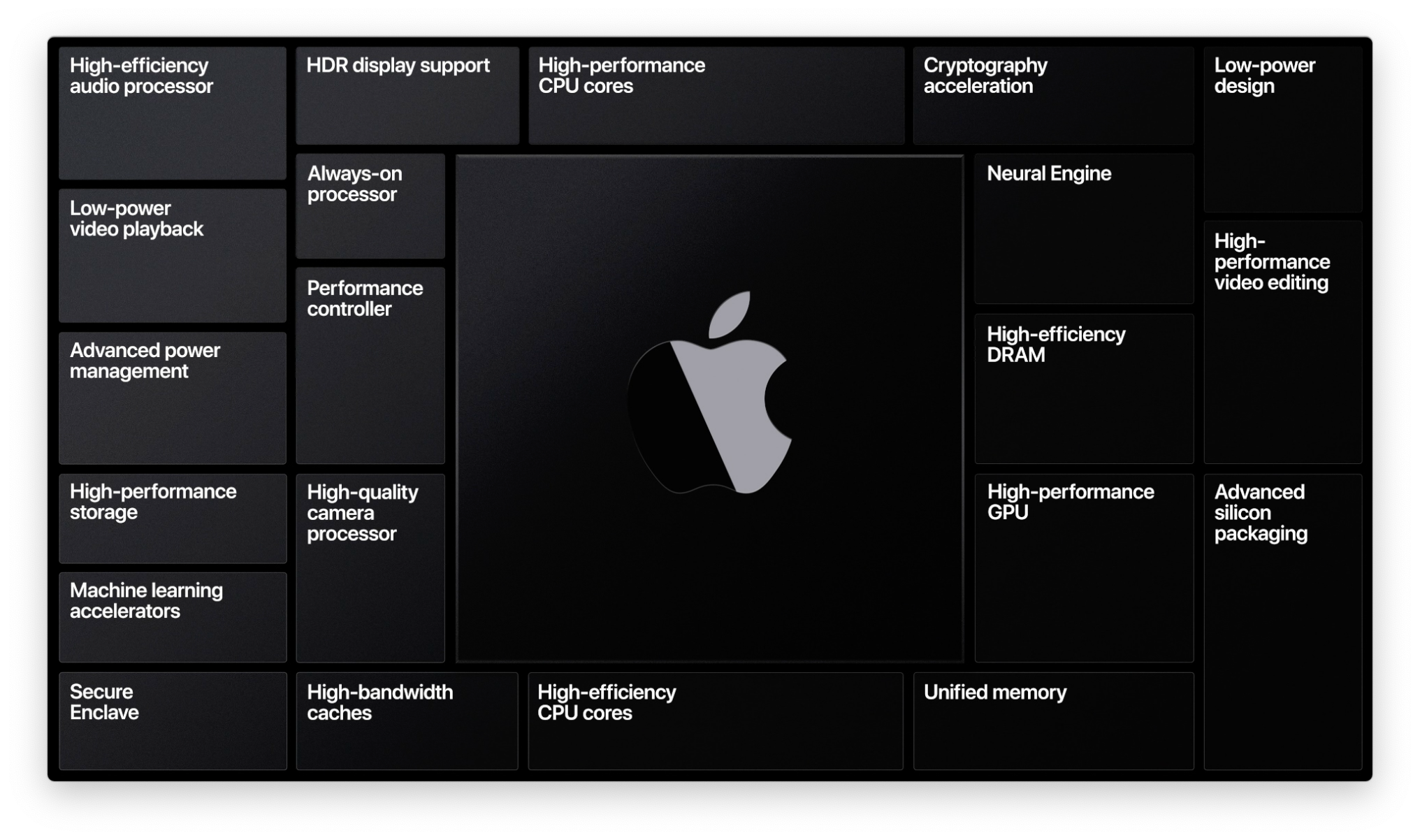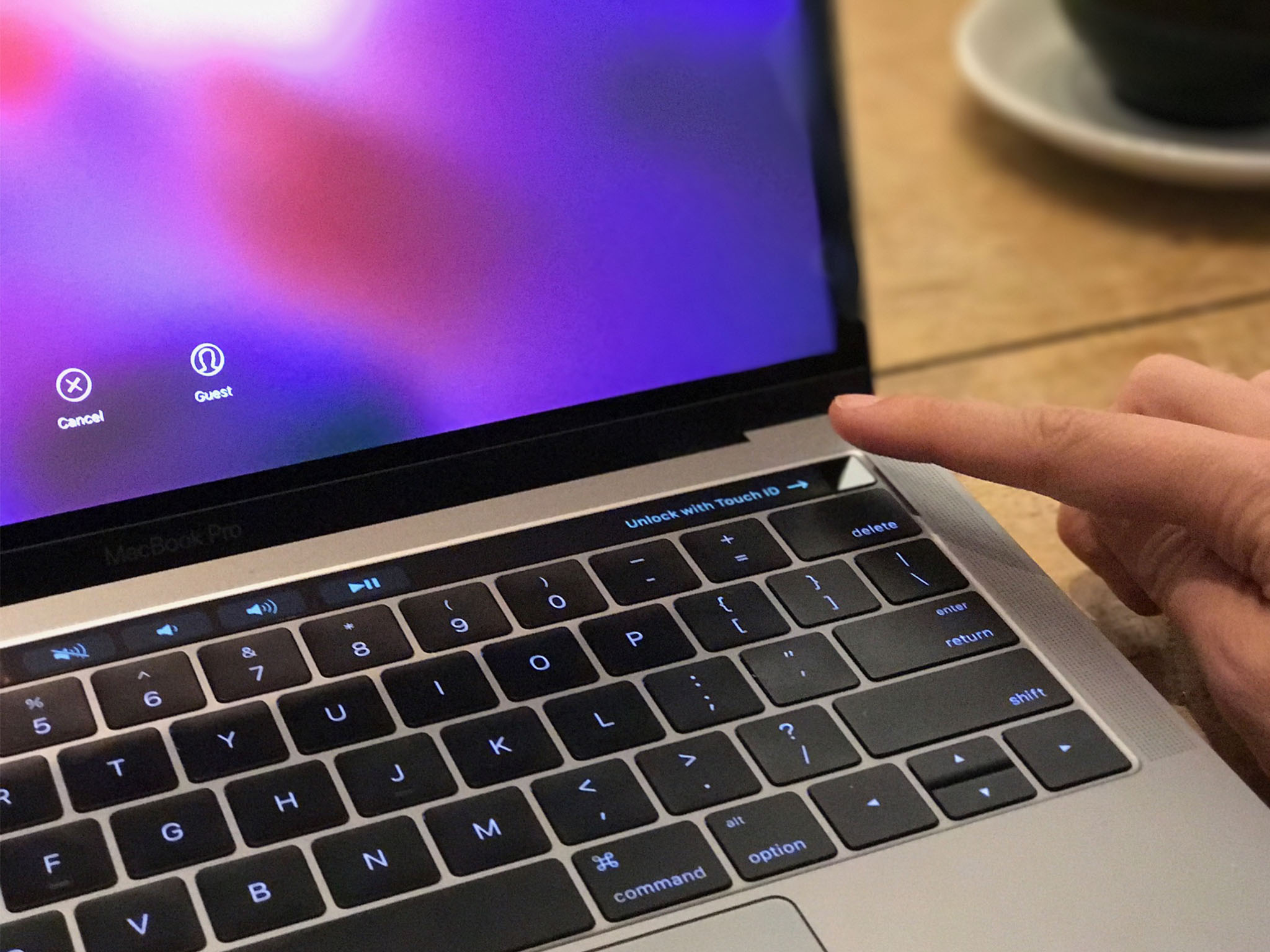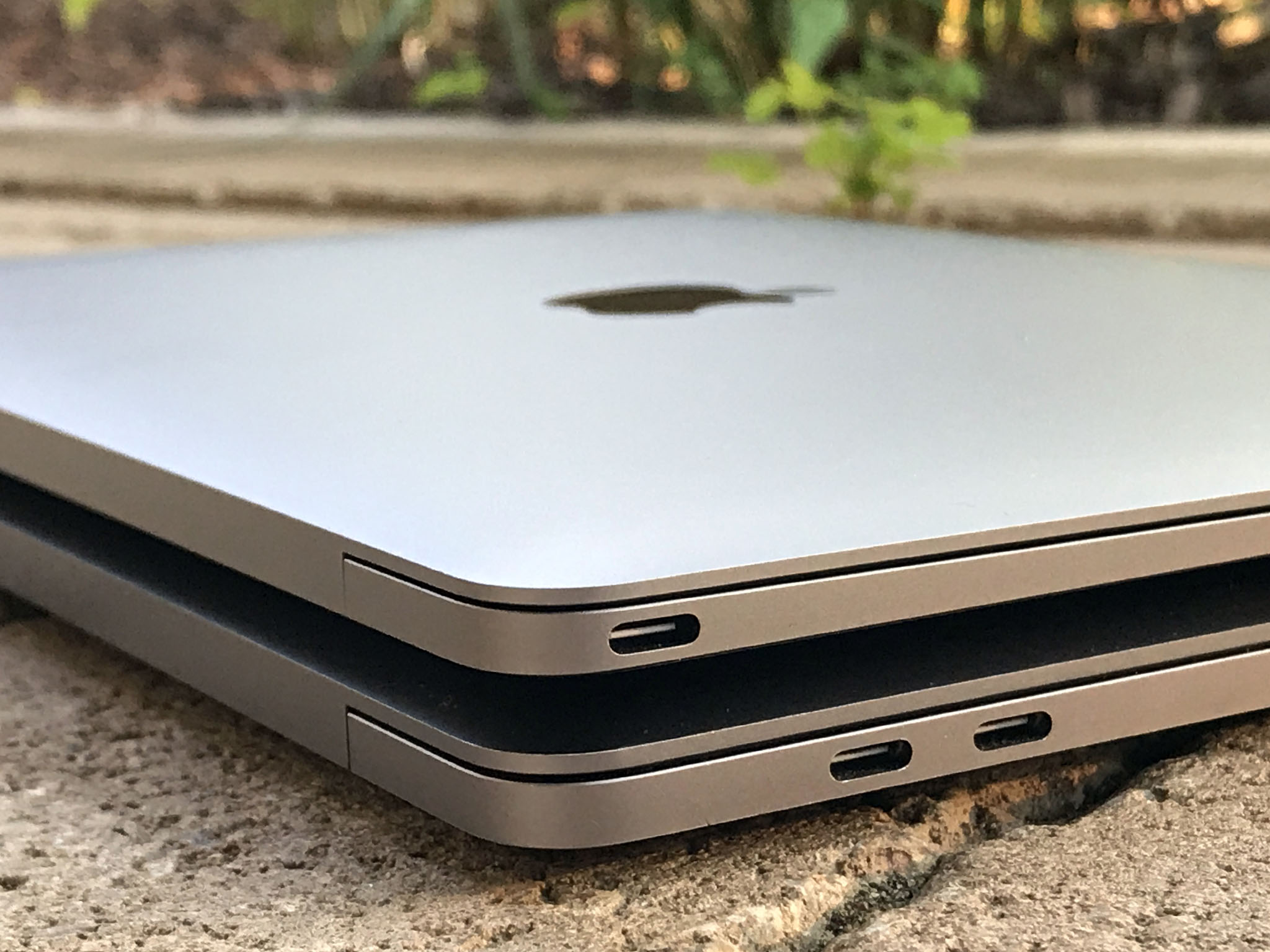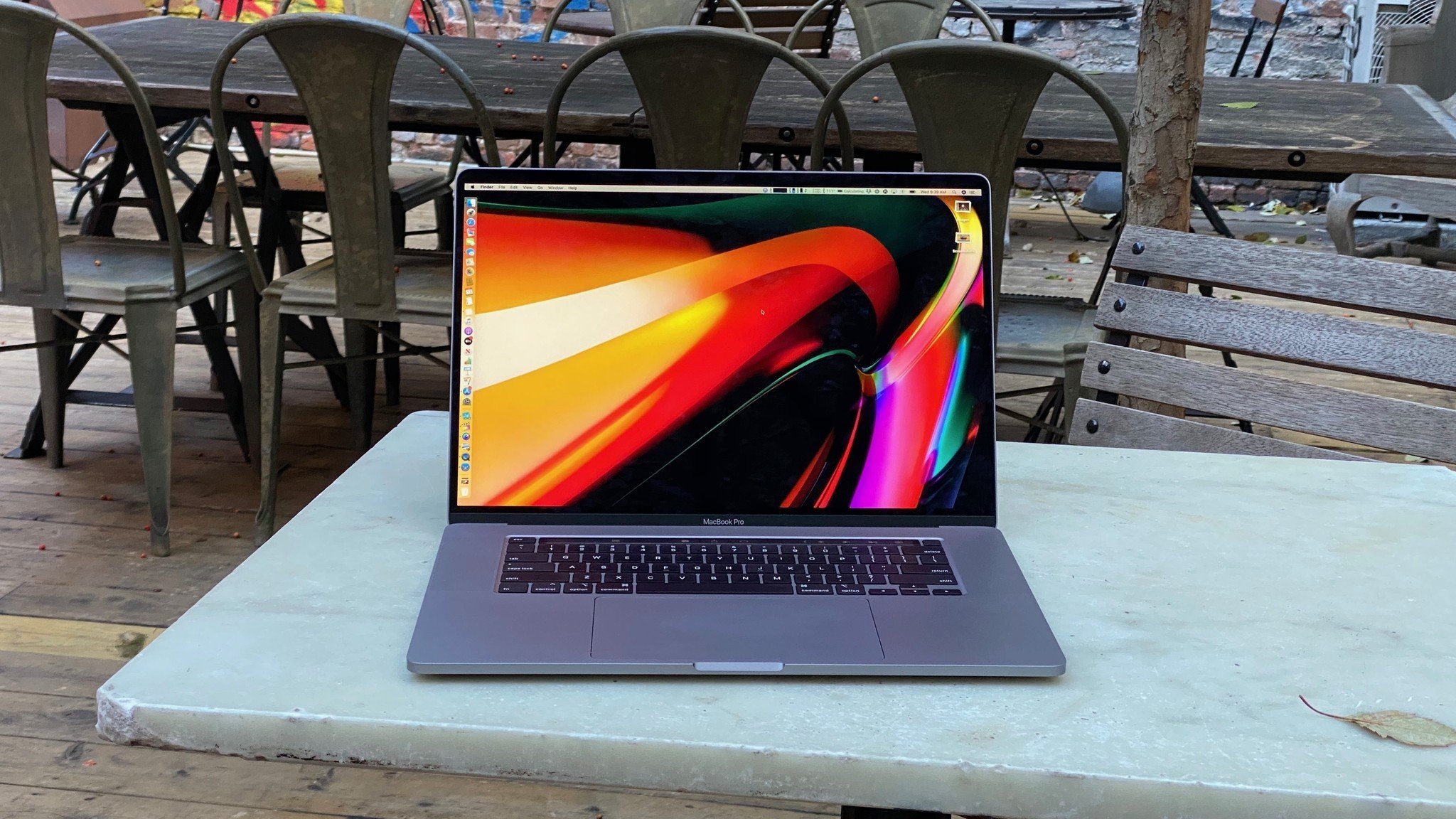Apple Silicon MacBook Pro: The ultimate portable powerhouse

I'm beyond super excited about the potential for a new 14-inch and 16-inch MacBook Pro — running Apple Silicon, with mini LED, Face ID, USB4, 5G, WiFI6, and much, much more. Here's why!
Apple Silicon MacBook Pro: Design
When Phil Schiller debuted the current MacBook Pro design in 2016 it was every bit as industry shocking and event as when Steve Jobs pulled the original MacBook Air out of that manilla envelop… Just for completely different reasons.
It was thinner and lighter, because of course it was. But it was also absolutely bereft of any of its traditional ports. MagSafe, gone. USB-A, gone. HDMI, SD, gone, gone. Only the 3.5mm headphone jack remained and it was just glaring, terrified, at what was about to happen to the iPhone.
In those ports' places were two to four USB-C / Thunderbolt 3 plugs. The future of interconnectivity. Meaning everyone in the present would have to book a one-way ticket to dongle-town — sorry, "pedants." A dongle is for copy protection. Adapter-ville. Population, all of us. But... more on ports in a scalding hot minute.
What wasn't as apparent right away was that the then-new MacBooks Pro were also bereft of something else — their beloved, beloved scissor switch keyboards. Those were gone too, and in their place were the immediately more divisive, and soon-to-be controversial butterfly switch keyboards. And then there was the Touch Bar. Yeah… I'll get to all that in a minute as well.
First, we just have to talk about the models themselves. There was a new low end, no Touch Bar model meant to fill the gap for MacBook Air upgraders who wanted a Retina Air. But there was no high end, no battleship model meant for pros who essentially wanted a portable desktop.
Now, objectively, a lot of people loved these MacBooks Pro. Apple sold a metric ton of them. But that was to a new customer base. A new generation who self-identified as pro, and wanted to brand-identify with the word pro on the box, but also really did want something still light, still thin.
Master your iPhone in minutes
iMore offers spot-on advice and guidance from our team of experts, with decades of Apple device experience to lean on. Learn more with iMore!
And the high-end pros were high-key not happy about it. Like, 2013 Mac Pro not happy about it. At all. Now, Apple appeased those high-end pros with a new high-end, modular Mac Pro in 2019. And, as much as I would love — all-caps LOVE — to see what that team, that beautiful ILM and Pixar-fed pro workflows team, could do with a modular MacBook Pro concept — one where you could swap out processor units and accelerators, hot swap power cores, just be every high-end hobbyists dream… I don't see that happening on our earth. Maybe earth 2. But definitely not this one. Those just aren't the types of MacBooks Pro Apple wants to make or believes they can sell at anything approaching a sustainable scale.
I mean, it's incredibly easy for any blogger, podcaster, or YouTuber to spend just all of Apple's money Homer Simpson's car-ing up a completely unrealistic, unaffordable hodge-podge of a product, particularly since we're none of us in charge of shipping it. So, for this, I'm going to try to stick with the direction Apple seems to already be going and the technologies that are already available.
No, what Apple did was first regress back to older, less efficient memory technologies and try to retrofit the thermals, thanks Intel, and then beef up the batteries to support it all. And then ship the 16-inch MacBook Pro, which may be our best possible indicator yet as to the direction Apple's going in the future.
I just think they got it out ahead of Apple Silicon because they wanted to do right… righter?… by traditional higher end pros… before Apple Silicon.
So, what happens next?
Apple Silicon MacBook Pro: Display
The current MacBook Pros already have a damn fine display. Retina density. P3 wide color gamut. TrueTone dynamic color temperature matching. Hell, the 16-inch even has a refresh rate you can toggle between 48 and 60 hz, so your movie-like or TV-like video looks properly movie-like or TV-like.
But there are still a few technologies, iPad, Mac, and brand new alike, that Apple could draw on for the next generation. (I mean, after they finish blowing the bezels off and going full-on 14-inch to match the 16-inch, of course. I'm not a monster.)
The first is mini-LED. That's the new display technology that uses thousands of tiny, 200 micron LEDs, grouped in local dimming zones, to make displays with deeper blacks and contrast ratios much closer to OLED, but without the burn-in, off-axis color shifts, and other problems inherent to OLED. That should let it get close to, if not full-on HDR support for both video watching and video making.
The second is adaptive refresh. That's what the iPad Pro line has used since 2017 to ramp up refresh rate to 120Hz for silky smooth scrolling, but also ramp it down to 60Hz and 48Hz, like the 16-inch MacBook Pro, but automatically, to save power and show TV and movies at the proper frame rates nature and Hollywood intended.
Now, Apple hasn't done ProMotion on OLED yet because it still messes with the color management, and seeing the white point change as the refresh rate changes is just a show stopper, but mini-LED is closer to LCD in terms of how it works, so just all the high-frame-rate fingers crossed on this one.
The third is a nano-texture option. That debuted in 2019 with the Pro Display XDR but has just now come to the last Intel iMac as well. Instead of a matte coasting, which diffuses reflections but reduces contrast, this actually etches the glass to disrupt the reflections while maintaining as much contrast as possible.
And, yeah, it looks straight up gorgeous. So good, I can't even imagine how much better a MacBook Pro display with all these characteristics would look. But I very much want to find out.
Now, I know some people are looking at macOS Big Sur and that nicely padded out new interface and just drenching themselves with hope for multitouch support as well, maybe even just Apple Pencil support and… well, all I'll say is expect it when you see it.
Apple Silicon MacBook Pro: Silicon

The 2016 MacBook Pro was designed with Intel actually hitting their die-shrink goals on time, yet here we are in 2020 and they're still shipping 14 nanometer and just throwing more, hotter cores at all their problems.
Not so with Apple Silicon. That could not only debut with the new ARMv9 instruction set architecture, or ISA, but on Taiwan Semiconductors new 5 nanometer process as well. And that'll give Apple not just a ton of silicon budget to work with, but a couple of options for this particular member of the system-on-a-chip family.
- Keep roughly the same performance and extend battery life.
- Keep roughly the same battery life and extend performance.
I know everyone is going to have like eight different opinions on those two possibilities, so please feel free to yell at me in the comments, but here's mine:
For an ultra-portable like the MacBook Air, battery life should be the priority. For an ultra-powerful like the MacBook Pro, performance should be the priority.
That's assuming Apple doesn't do something especially fancy like switch between power and efficiency modes depending on whether you're plugged in or on battery. With an opt-out toggle, of course, for the real road-warrior pros who just want to burn the whole thing down.
Since Johny Srouji, who runs Apple Silicon, specifically said SoCs, as in a single ship with CPU and GPU sandwiched together, that would seem to rule out even AMD being along for the graphics ride. In other words, custom Apple silicon all the way down.
But I do wonder if we could see something like the Afterburner ASIC card that was introduced on the new Mac Pro, even if only on the new 16-inch model. Something to accelerate ProRes, and potentially more. And who knows, maybe that lets the 14-inch model ship fanless for those pros who really do want an ultra-quiet option as well?
Beyond that, Apple has already hinted at custom acceleration for hypervisor in their systems-on-a-chip. That would make virtual machines run much faster, much closer to native speeds. But really, Apple could make custom accelerators for anything that they want to just absolutely crush when it comes to performance.
Basically, think of anything a pro would worry about being slow, and then imagine Apple specifically making silicon for it to run just ridiculously fast.
Apple Silicon MacBook Pro: Security

Current Macs have an Apple T2 quote-unquote security chip, which is really more like an Apple A10 Fusion in co-processor form. In addition to handling a bunch of encryption, signal processor, controller, and accelerator tasks, it also handles Touch ID on the MacBook line.
But, with Apple Silicon, there'd no longer be a need for a co-processor. Not when the main SoC can easily handle all that and in even more modern, more advanced form.
That means a Secure Enclave for Touch ID built right in, of course. But also an ANE, an Apple Neural Engine, which just happens to be what Face ID depends on as well.
And, as much as I like Touch ID, the idea of just lifting the lid on a MacBook Pro and having Face ID see me, match me, and unlock for me is, well, like Windows Hello on Hulk serum terrific.
Now, I realize some of you would still prefer Touch ID, because you feel like the extra action serves as extra confirmation and error prevention, and sure. Though I imagine Apple will handle that like they already do on the iPhone and iPad.
But, say it with me, "por qué no los dos?"
Because as you ll know, multi-biometrics remains my nerdiest of nerd dreams for all Apple's devices.
Apple Silicon MacBook Pro: Radios
So far, Apple has entirely avoided WiFi 6 on the Mac line while embracing it early and eagerly on the iPhone and iPad. There have been issues with some implementations in the past, so it's entirely possible Apple wanted to wait for their own custom silicon before bringing it to the Mac. Either way, this seems like one of the safest bets in the business right now.
5G cellular networking, on the other hand, could be seen as most valuable on an ultra portable like the MacBook Air. But once Apple goes to the trouble of making both the Mac hardware and operating system cellular capable and efficient, it's almost certainly something the pro market would appreciate having as an option as well. Even if it's a Qualcomm-costly option. Especially in the future when Apple starts to integrate their own custom modems into their own custom silicon.
It's also interesting to think about Apple super-setting things like Bluetooth and Wi-Fi, sort of like what they've already done with AirPods for audio. For example, custom silicon and radio technology to make AirDrop even faster and more reliable between Apple devices.
The only real limit here is what the teams have time to work on any given year. Let me know what you want to see in the comments.
Ports

I want more ports on the MacBook Pro but like Get Shorty, I don't feel one way or another about it. See, Apple's philosophy is not to include anything in the hardware that most people won't use most of the time. In other words, anything niche gets a dongle. Sorry, adapter.
I'm assuming the current two or four USB-C / Thunderbolt 3 ports will become two or four USB4 / Thunderbolt 4 ports. And I'm legit hoping Apple dumps the two from the pro lineup and standardizes on four across the lineup. Because pro.
I'm also assuming they keep the 3.5mm headphone jack as well for audio pros. Though that thing has got to be shifting bricks right now, looking at the iPhone Pro and iPad Pro…
But once you get into the higher-end pro stuff, the rest doesn't matter as much. Because you're not just dealing with 3.5mm and HDMI and SDXC any more. No, you're dealing with XLR and SDI and CFExpress, and you're just accepting that you'll never live that dongle-free life. And yeah I said it. You're not my dongle dad.
So, what I guess I'm saying is that I'm fine with 4x USB4. Just please include those new braided cables in the box, because pro gear should last.
Apple Silicon MacBook Pro: Keyboard
Confession: I use the Touch Bar. It's still the fastest way to scrub through everything from timelines to tabs on macOS. But I fully realize I may be in the minority and, according to Apple's own manifesto, and what I'm assuming is the Second Law of Metaphysics, nothing unused by most people most of the time should exist.
If Apple is determined to keep it, though, they should improve it. It's been… four years now, where's our Taptic Engine already? How can they take away force press and replace it with long press if they haven't even given us the press yet?
Like I said in my ASi MacBook Air video, I know a few people still miss the stability of the butterfly keys, and others the absolute clickity-clackity unit that was ye old MacBooks of yore. But, the current scissor-switch Magic Keyboard is either the best compromise or just the best of all worlds.
At least until the whole thing is replaced with a virtual, adaptive Taptic surface.
Kidding. A bit.
Apple Silicon MacBook Pro: Audio/Video
The new speakers and mics on the 16-inch MacBook Pro are aces. I realize Apple can't cram all of that into a new 14-inch, but cram as much as possible and I'll consider it a solved problem for now. They're just all shades of great.
The cameras are another story, of course. 720p tater-tots still, the both of them.
Apple recently fixed this on the last Intel iMac by upping the sensor to 1080p, making it back illuminated, and unleashing the T2 image signal processor on it for face detection, white balance, color balance and more.
And I really, really, markdown double asterisk really hope they do the same on the new MacBook Pro.
Apple's a terrific camera company and it would be an absolute shame if anything they made, especially with the word Pro on it, didn't crushingly reflect that.
Apple Silicon MacBook Pro: Pricing

Apple's been doing something really interesting lately. They've been letting the high-end prices creep up to subsidize newer display and silicon and security and other technologies. But then, once those new technologies have been paid down, they've been pushing them down to increasingly affordable models.
iPhone X to iPhone SE. iPad Pro to iPad 10.2. Apple Watch 5 to Apple Watch 3 redux.
And my hope / guess is we'll see something similar on the ASi Mac side. Meaning, I don't expect much if anything in the way of cost savings for the MacBook Pro line. I fully expect Apple to spend every dollar saved to bring ever newer, ever better tech to into the line.
In other words, more features for the same price.
But then, I expect to see that tech get paid down and pushed down into a new generation of more affordable MacBooks non-Pro.
That way, the average selling price, or ASP, stays roughly the same, but the value increases at both ends for both types of customers.
Win/win.

Rene Ritchie is one of the most respected Apple analysts in the business, reaching a combined audience of over 40 million readers a month. His YouTube channel, Vector, has over 90 thousand subscribers and 14 million views and his podcasts, including Debug, have been downloaded over 20 million times. He also regularly co-hosts MacBreak Weekly for the TWiT network and co-hosted CES Live! and Talk Mobile. Based in Montreal, Rene is a former director of product marketing, web developer, and graphic designer. He's authored several books and appeared on numerous television and radio segments to discuss Apple and the technology industry. When not working, he likes to cook, grapple, and spend time with his friends and family.
